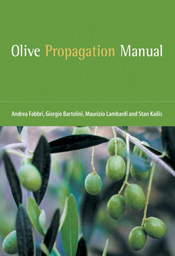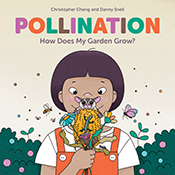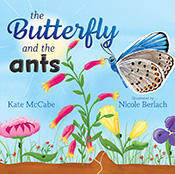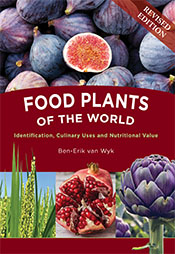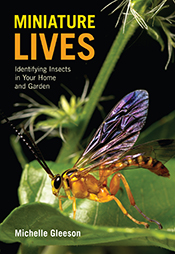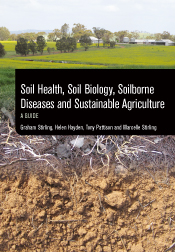Olive Propagation Manual
By: Andrea Fabbri, Giorgio Bartolini, Maurizio Lambardi, Stan Kailis
An authoritative guide to olive propagation, providing information on seed germination, rooting of cuttings, grafting and micropropagation.
This practical manual is an authoritative guide to olive propagation, providing extended information on seed germination, rooting of cuttings, grafting and micropropagation. The authors describe each topic in detail and discuss the relative advantages and disadvantages of each procedure. + Full description
The Olive Propagation Manual has been developed to take into account the future demand for olive oil, which is expected to increase to three million tonnes annually over the next 10 years. Such volumes will require active farming programs and olive trees for new orchards and the replacement of olive trees in existing orchards. As the olive industry moves from traditional manual methods to mechanised operations, planting stock will need to be developed to meet future challenges. Varietal selection will need to be directed to clones that are early bearing, disease resistant, able to be mechanically harvested, and produce quality fruit and oil. Each of these issues are addressed throughout this book.
The Olive Propagation Manual explores historical perspectives, traditional methods and state-of-the-art olive propagation including theoretical explanations and all practical aspects.
- Short descriptionNews
No longer available in a print edition.
Reviews
"This book should be useful to anyone with olive propagation, as it appears to include all the information necessary to set up and run an olive nursery."
Hereward Corley (Experimental Agriculture vol. 41, 2005)
"This book is for the serious olive grower."
Earth Garden, June-August 2004
"In style, this new release is in the best sense plain. The flower and fruit biology of the olive, its propagation by cutting, grafting and in-vitro techniques, and nursery requirements are clearly and fully explained. For agricultural science students, cultivators and the seriously green-fingered."
The Australian, 7 April 2004
Contents
1. Introduction1.1. Importance of propagation for olive cultivation
1.2. Fundamentals of plant propagation
1.3. Olive propagation today
2. Flower and fruit biology in olive
2.1. Olive cycles
2.2. Stages of olive reproduction
3. Propagation by cutting
3.1. Biology of adventitious root formation in cuttings
3.2. Techniques of propagation by cutting
4. Propagation by grafting
4.1. Purposes of grafting
4.2. Production of olive seedlings
4.3. Theoretical and practical aspects of grafting
4.4. Production of clonal rootstocks in olive
4.5. Grafted plants or self-rooted plants?
5. In vitro propagation of olive
5.1. Micropropagation
5.2. Somatic embryogenesis
5.3. Synthetic seeds and micrografting
5.4. Considerations on olive micropropagation
5.5. In vitro conservation of olive
6. The olive nursery (stock plants, structures, equipment and operations)
6.1. Stock plants
6.2. Greenhouses
6.3. Substrates
6.4. Environmental conditions for rooting
6.5. Hardening (1st transplant)
6.6. Plant growing (2nd transplant)
6.7. Plant training
6.8. Plant certification
7. Conservation of olive germplasm
Appendix 1 - Rooting ability of all olive cultivars of which scientific literature is available
Appendix 2 - Olive germplasm collections in the world
Index
Authors
Andrea Fabbri is Full Professor of Arboriculture and Pomology at the University of Parma, Faculty of Agriculture. A large part of his professional activity has been focused on research and teaching on olive, in various laboratories and universities in Italy and California. His main olive research subjects have been physiology and anatomy of adventitious rooting in cuttings, flower biology, freezing injury, systematic pomology (biomolecular characterisation), organic cultivation, ecophysiology. His research papers have been published on the most important horticultural scientific journals. He is presently involved in the development of olive cultivation in cold areas of Northern Italy.Giorgio Bartolini is Head Researcher at the “Istituto per la Valorizzazione del Legno e delle Specie Arboree” (Trees and Timber Institute) of the National Research Council (CNR) of Florence, Italy. His activity has been focused on research concerning woody plants propagation by cuttings of olive, peach, grapevine, etc.; management of an international data bank (world olive germplasm); individuation of morphological and molecular markers for cultivar characterisation in O.europaea; study of gene expression induced by low temperature. He participates in joint research projects with research institutes and universities of Italy, California and Spain. He is author or co-author of many research papers published in International Journals, books and in proceedings of International Congresses and Symposia.
Maurizio Lambardi is a Researcher at the “Istituto per la Valorizzazione del Legno e delle Specie Arboree” (Trees and Timber Institute) of the National Research Council (CNR) of Florence, Italy. He is also Professor of Woody Plant Biotechnology and Micropropagation at the University of Modena and Reggio Emilia, Faculty of Agriculture. He has wide-ranging expertise on woody plant micropropagation and biotechnology. His main areas of research on the olive have concerned tissue culture (organogenesis, somatic embryogenesis), genetic transformation by biolistic, germplasm preservation by slow growth storage and cryopreservation. He is the author or co-author of over 90 scientific papers and reviews, published in leading International Journals, books, proceedings of International Congresses and Symposia.
Stan Kailis is Professorial Fellow at The University of Western Australia in the School of Plant Biology. His antecendents came from the Dodecanese Island, Megisti. His interests focus on quality aspects of olive. He is particularly interested in the propagation of olive varieties such as Kalamata, Konservolia, Leccino and Manzanilla. Stan has made presentations on olive at national and international forums. He has published numerous research papers in national and international journals. He has conducted numerous schools and workshops in Australia on olive growing, olive oil and table olive production, organoleptic evaluation of olive products and olive propagation.

